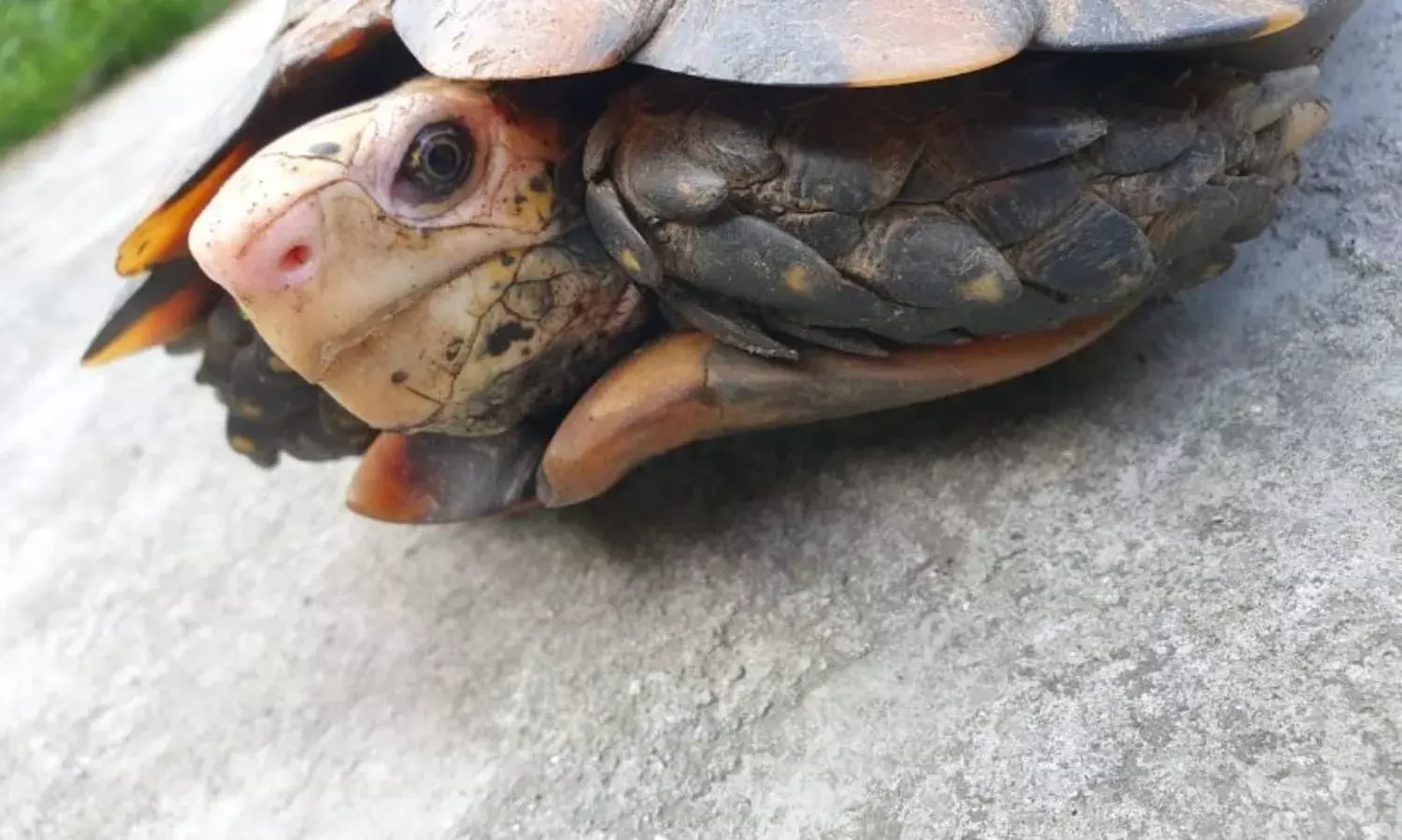Tale of Two Tortoises Leaves their Rescuers Unimpressed
Elusive tortoises sent to zoo

ITANAGAR: Around two weeks back when the range forest officer in Arunachal Pradesh’s Hapoli forest division, Bunty Tao, rescued a tortoise from a villager near Yazali in Lower Subansiri district, he was ecstatic about the possibility of having stumbled upon a unique species.
His joy, however, would be short lived.
News reports began appearing this week about how Tao had managed to save the tortoise from possibly landing up on someone’s dinner plate, and photos he took of the rescued animal reached Guwahati-based reptile specialist Jayaditya Purkayastha.
This past Sunday, Tao met up with Shailendra Singh and Arpita Dutta from the Turtle Survival Alliance/ Wildlife Conservation Society, India.
Experts believed that the species Tao had rescued was an impressed tortoise, Manouria impressa. When they saw the tortoise, they were convinced of it.
But a bigger surprise awaited the team when they visited the site where the tortoise was found – they discovered another animal of the same species waiting there.
(For purposes of safety and precaution against poachers, Tao said he would not disclose the exact location where the animals were found.)
A statement from WCS India said it was the first recorded sighting of this tortoise in the country, increasing the total number to 29 species of non-marine chelonians and five tortoises in India.
“This is the elusive medium-sized tortoise species which inhabits moist primary forests of the hilly tracts of the Indo-Myanmar biodiversity hotspot. The latest sighting further raises the status of the country as well as the state in the list of strategic turtle conservation priority areas,” the statement reads.
The last reported range of the species was from Gwa in Myanmar, where TSA/WCS are carrying out conservation breeding of this endangered tortoise for further reintroduction into the wild.
The Wildlife Conservation Society said that the finding “emphasises the importance of conducting extensive herpetofaunal survey in north-eastern India, especially along the border areas”.
While experts in the field are of the opinion that the animals should be released back into their environment, the state government’s forest department took note of the finding and has now decided to keep the animals under observation in its custody.
The two impressed tortoises - a male and a female - were officially handed over to the forest department on Thursday. They will be housed in the biological park (zoo) in the state capital, Itanagar.
Those who were part of the rescue team feel that may not be the best decision.
Shailendra Singh said that it is “fine” to keep the animal for a limited period but that they “need special care in captivity”.
B.B.Bhatt, who helped identify the species after Tao posted the photos on a WhatsApp group, is concerned whether the facilities in the state will be able to help sustain the animals.
“Our zoo doesn't have proper in-housing facility,” he said, referring to the reptile care houses these creatures require.
Bhatt emphasised that there are no experts or persons experienced in reptile handling, whereas impressed tortoises (currently listed as ‘vulnerable’ under the IUCN Red List of Threatened Species) need special care.
Attempts to breed the species in captivity in Vietnam have not led to much progress, Bhatt told The Citizen. The “basic biology of the animal should be known before handling it,” he said, in light of the fact that the animals found could be a different sub-species of the impressed tortoise.
But perhaps no one is more livid than the man who rescued the first animal.
“The reptile experts said that the animals will die in the zoo as there has been no success in captivity,” Tao said.
He repeats what he said the experts told him: that the animals thrive best in moist high-altitude areas, and Itanagar does not meet those requirements.
“Any wildlife enthusiast should be encouraged to do such conservation work,” he said as his voice fades away on the other end of the phone line.



